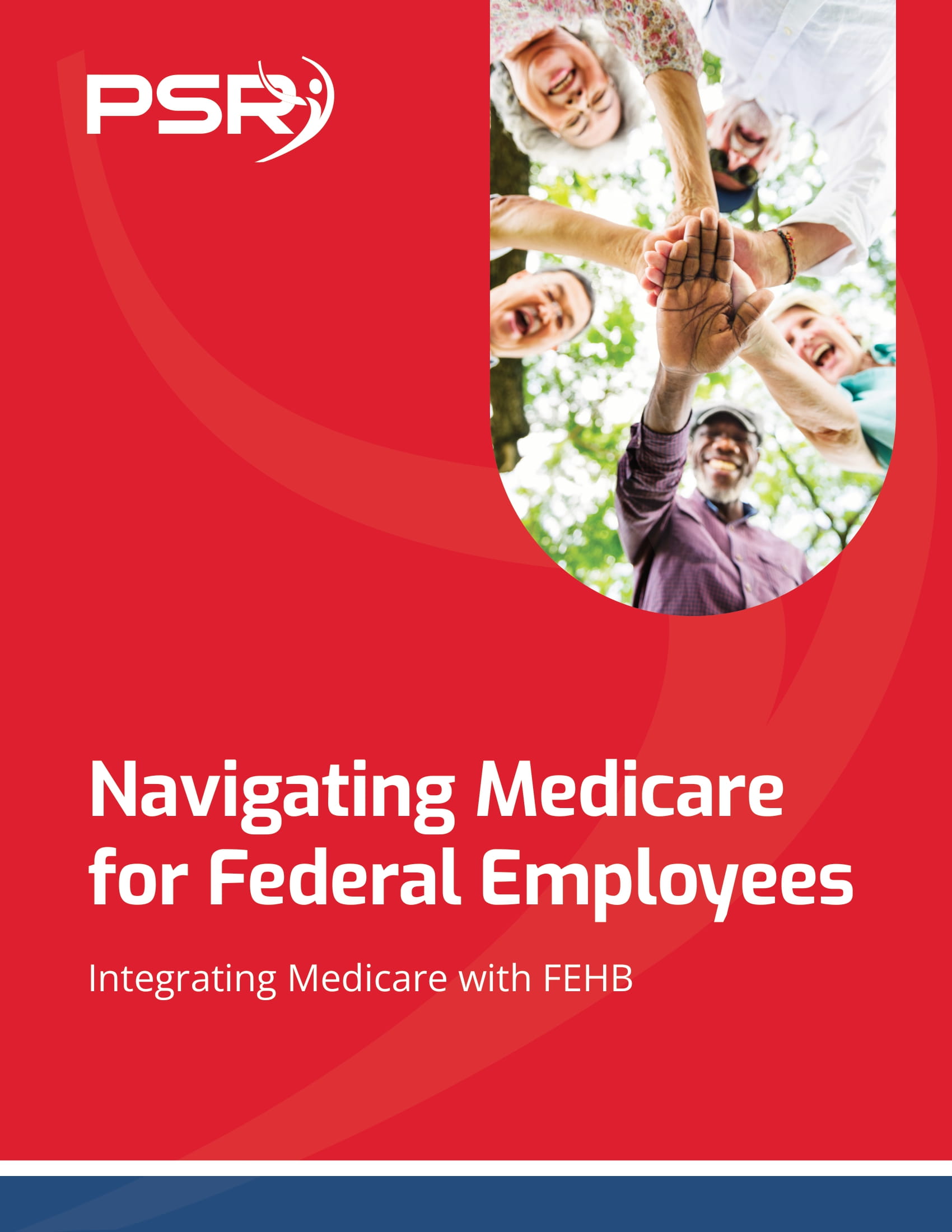Medicare and FEHB Coordination: Maximizing Healthcare Benefits for Federal Employees and Retirees
Federal Employees Health Benefits (FEHB) provides comprehensive healthcare coverage for federal employees, retirees, and their dependents. As federal employees age into Medicare eligibility, understanding how Medicare and FEHB work together is crucial to ensure continued healthcare coverage and to avoid unnecessary costs. Coordinating Medicare and FEHB can provide federal retirees with optimal coverage while reducing out-of-pocket expenses, but making the right decisions during enrollment is key.
This guide will explain how Medicare and FEHB coordinate, what coverage each provides, and whether federal retirees should keep both FEHB and Medicare.
How Medicare Works with FEHB
For federal employees and retirees, FEHB offers a wide array of health plans that provide coverage for hospital stays, doctor visits, prescription drugs, and more. However, once you become eligible for Medicare, the two programs can work together to provide more comprehensive coverage and minimize out-of-pocket costs.
Key Points of Coordination:
- Medicare as Primary Payer: In most cases, Medicare becomes the primary payer once you retire and enroll in Medicare, with FEHB acting as the secondary payer. This means Medicare will pay for your healthcare services first, and FEHB will cover any remaining costs, such as deductibles, copayments, and coinsurance.
- FEHB as Supplement: FEHB can effectively act as a Medicare supplement plan, covering the gaps in Medicare coverage that would otherwise require out-of-pocket payments. This can include coverage for things like deductibles and coinsurance.
- Prescription Drug Coverage: Most FEHB plans already include prescription drug coverage that is as good as or better than Medicare Part D. This means you likely won’t need to enroll in Medicare Part D if you keep FEHB.
By understanding how Medicare and FEHB coordinate, federal retirees can maximize their healthcare coverage and reduce their out-of-pocket healthcare costs.
Medicare and FEHB Benefits Coordination: What Each Covers
The coordination between Medicare and FEHB offers robust healthcare coverage, ensuring that federal retirees have access to a full range of medical services. Understanding the coverage offered by each program will help you make informed decisions about enrolling in Medicare and whether to keep FEHB.
What Medicare Covers:
- Medicare Part A: Covers hospital stays, skilled nursing facilities, hospice care, and some home health services.
- Medicare Part B: Covers outpatient care, doctor visits, preventive services, and durable medical equipment (DME).
- Medicare Part D: Covers prescription drugs, but most FEHB plans already provide drug coverage as part of their benefits package, so enrolling in Part D may not be necessary.
What FEHB Covers:
- Comprehensive Health Coverage: FEHB plans cover hospital services, outpatient care, prescription drugs, and preventive services. Many FEHB plans also cover dental, vision, and wellness benefits that aren’t included in Medicare.
- Secondary Coverage: When you have both Medicare and FEHB, FEHB acts as secondary insurance, covering out-of-pocket costs not paid by Medicare.
The coordination of FEHB and Medicare benefits ensures that you’re fully covered for both inpatient and outpatient services, without excessive out-of-pocket costs.
Medicare Part B and FEHB: Should You Enroll in Both?
One of the most important decisions federal retirees face is whether to enroll in Medicare Part B when they already have FEHB coverage. Medicare Part B requires a monthly premium, and while it covers important services, federal employees may wonder if it’s necessary to pay for both Medicare Part B and FEHB.
Pros of Enrolling in Medicare Part B with FEHB:
- Reduced Out-of-Pocket Costs: Medicare Part B covers doctor visits, outpatient services, and preventive care. When combined with FEHB, you may have little to no out-of-pocket costs for these services.
- Avoiding Penalties: If you delay enrolling in Medicare Part B when you’re first eligible and decide to enroll later, you could face a late enrollment penalty that increases your premiums by 10% for every 12 months you were eligible but didn’t enroll.
- Enhanced Coverage: With Medicare as the primary payer and FEHB as the secondary payer, your out-of-pocket expenses could be significantly reduced.
Cons of Enrolling in Medicare Part B with FEHB:
- Monthly Premium: Medicare Part B requires a monthly premium, which in 2024 is $174.70, but higher-income individuals may pay more. This premium is in addition to your FEHB premiums.
- FEHB Without Medicare: Some retirees may find that their FEHB plan provides sufficient coverage on its own, without the need for Medicare Part B. However, this may result in higher out-of-pocket costs in the event of frequent doctor visits or outpatient procedures.
Deciding whether to enroll in Medicare Part B with FEHB depends on your healthcare needs, budget, and how much you’re willing to spend on premiums to reduce out-of-pocket costs.
Medicare and FEHB for Retirees: Maximizing Your Benefits
Federal retirees who are eligible for both Medicare and FEHB can maximize their benefits by coordinating the two programs effectively. By doing so, they can lower their overall healthcare costs and ensure they have access to comprehensive coverage.
Key Considerations for Federal Retirees:
- Medicare Part A is Usually Free: Since most retirees qualify for premium-free Medicare Part A, it’s generally recommended to enroll in Part A when you become eligible. Part A can cover hospital stays and other inpatient services, which can supplement your FEHB coverage.
- Medicare Part B Enrollment: Deciding whether to enroll in Medicare Part B depends on your healthcare needs. While Part B requires a monthly premium, it can significantly reduce your out-of-pocket costs for outpatient care.
- Prescription Drug Coverage: Most FEHB plans provide comprehensive prescription drug coverage that is as good as or better than Medicare Part D, so you may not need to enroll in a Part D plan.
Federal retirees who coordinate their Medicare and FEHB benefits effectively can enjoy comprehensive healthcare coverage with minimal out-of-pocket costs.
Should I Keep FEHB with Medicare?
Many federal retirees wonder if they should keep their FEHB coverage once they become eligible for Medicare. The answer depends on several factors, including your healthcare needs, budget, and whether you want to maintain access to benefits that Medicare does not cover.
Reasons to Keep FEHB with Medicare:
- Comprehensive Coverage: FEHB provides coverage for services that Medicare does not, such as dental, vision, and prescription drugs. By keeping both, you ensure that you’re fully covered for a wide range of medical services.
- Lower Out-of-Pocket Costs: When you keep FEHB as a secondary payer to Medicare, FEHB will cover out-of-pocket costs that Medicare doesn’t, such as deductibles, copayments, and coinsurance.
- Avoiding Medigap: If you keep FEHB, you may not need to purchase a Medigap (Medicare Supplement) plan, as FEHB already covers many of the gaps in Medicare’s coverage.
Reasons to Drop FEHB:
- Medicare Advantage Plans: Some retirees choose to enroll in a Medicare Advantage plan, which often provides additional benefits like dental and vision, as well as lower premiums compared to FEHB. In this case, you might decide to drop FEHB coverage.
- Cost: Keeping both FEHB and Medicare means paying premiums for both programs, which may not be financially feasible for everyone. However, many retirees find the additional coverage worth the cost.
Ultimately, deciding whether to keep FEHB with Medicare depends on your personal healthcare needs, budget, and whether you value the additional coverage FEHB provides.
Medicare and FEHB Premiums: What You Pay
When you’re enrolled in both Medicare and FEHB, you’ll need to pay premiums for both programs. However, the amount you pay will depend on the specific FEHB plan you choose, your income, and whether you enroll in Medicare Part B.
Medicare Premiums:
- Medicare Part A: Most individuals qualify for premium-free Part A. If you do not qualify, you may pay up to $505 per month (as of 2024).
- Medicare Part B: The standard premium for Medicare Part B in 2024 is $174.70 per month, but higher-income individuals may pay more based on their Modified Adjusted Gross Income (MAGI).
- Medicare Part D: If you choose to enroll in a Medicare Part D plan (though many federal retirees do not need to due to FEHB’s prescription drug coverage), the premiums vary by plan.
FEHB Premiums:
Your FEHB premiums will depend on the plan you choose. The federal government covers a significant portion of FEHB premiums for both employees and retirees, making FEHB a cost-effective option.
By carefully managing your Medicare and FEHB premiums, you can maximize your coverage without overextending your budget.
Medicare and FEHB Enrollment: Key Steps
Enrolling in both Medicare and FEHB requires careful planning to ensure that you don’t miss important deadlines or lose coverage. It’s important to enroll during the correct Medicare enrollment periods and to ensure your FEHB plan is still in place once you transition to Medicare.
Key Steps for Enrolling in Medicare and FEHB:
- Enroll in Medicare Part A: You should enroll in Medicare Part A as soon as you become eligible, as it’s premium-free for most individuals.
- Decide on Medicare Part B: Whether to enroll in Medicare Part B depends on your healthcare needs and whether you want to reduce your out-of-pocket costs for outpatient care.
- Keep Your FEHB Coverage: Many federal retirees choose to keep their FEHB coverage to supplement Medicare. During FEHB open season, review your plan options and ensure that your coverage aligns with your healthcare needs.
- Update Your Information: Make sure to coordinate with the Office of Personnel Management (OPM) to ensure your FEHB benefits continue once you’re enrolled in Medicare.
By following these steps, you can coordinate your Medicare and FEHB coverage to ensure continuous healthcare benefits.
Medicare Advantage Plans and FEHB: Can You Have Both?
Medicare Advantage (Part C) plans are an alternative to Original Medicare, offering all-in-one coverage that includes hospital, medical, and often prescription drug coverage. Some federal retirees may wonder if they can enroll in both a Medicare Advantage plan and keep their FEHB coverage.
Key Considerations:
- Medicare Advantage as Primary Coverage: If you enroll in a Medicare Advantage plan, the plan will act as your primary coverage, replacing Medicare Part A and Part B. FEHB may still cover some additional services, but it will be secondary to your Medicare Advantage plan.
- FEHB Coverage: Some retirees choose to keep their FEHB plan as a backup in case they decide to leave their Medicare Advantage plan in the future. However, keeping both Medicare Advantage and FEHB may result in overlapping coverage.
- Cost: Medicare Advantage plans often have lower premiums than FEHB plans, but they may also have higher out-of-pocket costs. Retirees should weigh the benefits of Medicare Advantage against the comprehensive coverage of FEHB.
Deciding whether to enroll in a Medicare Advantage plan alongside FEHB requires careful consideration of your healthcare needs and how much you’re willing to spend on premiums and out-of-pocket costs.
Coordinating Medicare and FEHB for Optimal Healthcare Coverage
Coordinating Medicare with FEHB offers federal employees and retirees the opportunity to enjoy comprehensive healthcare coverage with minimal out-of-pocket costs. By understanding how the two programs work together, federal retirees can maximize their healthcare benefits and make informed decisions about their healthcare coverage in retirement.
If you need assistance navigating the complexities of Medicare and FEHB coordination, consider consulting with a Medicare advisor who specializes in federal employee benefits. They can help you choose the right coverage options and ensure you’re getting the most out of your benefits.
Search for Public Sector Retirement Expert.
Receive the Best advice.
PSR Experts can help you determine if Public Sector Retirement is right for you or if you should look for alternatives.
The Best Advice creates
the best results.
Search for Public Sector Retirement Expert.
Receive the Best advice.
PSR Experts can help you determine if Public Sector Retirement is right for you or if you should look for alternatives.
The Best Advice creates
the best results.
Recent Articles


The Best FEHB Plans for 2025: Which One Fits Your Lifestyle and Budget the Best?
Key Takeaways: Understanding your healthcare needs and budget is

Special Retirement Options for FAA and LEO Employees: Are You Taking Advantage of What’s Available?
Key Takeaways: FAA and LEO employees have exclusive retirement

Federal Employee Benefits You Didn’t Know Could Give Your Wallet a Serious Boost in Retirement
Key Takeaways You might be sitting on hidden federal




